19 Home Remedies To Improve Spider Veins Naturally
Safe and effective ingredients to help you keep the discomfort caused by the condition in check.
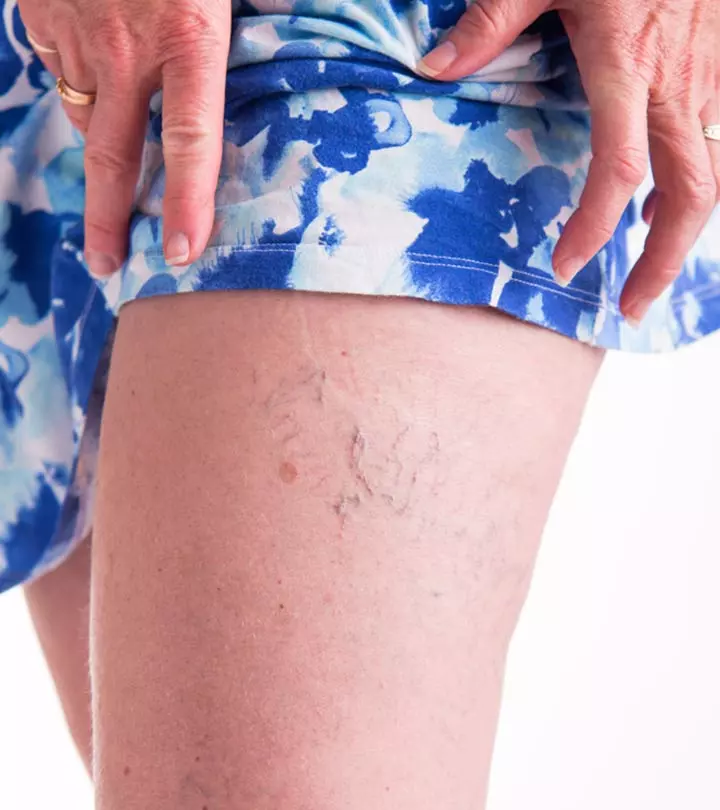
Image: Shutterstock
Telangiectasias or spider veins show poppy and wide veins through the skin. It is important to get immediate medical care and attention to treat spider veins as they are usually accompanied by involuntary throbbing in the limbs, which can get uncomfortable over time. Usually, this body condition is found in senior citizens above 50 years of age, but sometimes, younger peeps can also get diagnosed with it (1). Keep scrolling to know some symptoms, risks, and home remedies for spider veins.
In This Article
What Causes Spider Veins?
Spider veins are common in both men and women.
They occur as a result of weakened valves in the veins, which otherwise enable blood flow through the veins. Damaged valves result in the swelling of veins, and these develop into spider veins (2). Some of the most common causes of this condition include:
- Aging
- A family history of spider veins (heredity)
- Professions that require standing for a long time
- Contraceptive pills
- Pregnancy
- Tight clothing
- Increased BMI (Obesity)
- Any prior history of blood clots
- Constipation
Other than being unsightly to look at, spider veins may also be accompanied by a series of symptoms that can become bothersome in the long run (3).
Key Takeaways
- Spider veins are caused due to weakened valves in the veins that swell and become visible on the skin.
- It is commonly noticed in individuals who are pregnant, obese, or indulge in smoking.
- Apple cider vinegar is an effective home remedy in treating spider veins as it helps increase blood flow in the affected area.
- The magnesium content in Epsom salt can aid in reducing the appearance of spider veins and tackle inflammation.
- Massage the affected area with coconut or castor oil to increase blood circulation.
Symptoms Of Spider Veins
- Itching around the affected area
- Aching legs
- Unusual restlessness in the legs
- Ulcers on the skin
- Rashes around the affected area
- Veins paining on contact
- Changes in the skin around the ankles or calves
But aren’t these symptoms similar to that of varicose veins? How are spider veins different? Let’s find out below.
Spider Veins Vs. Varicose Veins
The two most commonly occurring vein conditions are spider veins and varicose veins.
Many often get confused between the two types. To help you decide which of the two you are actually suffering from, here are some of major differences between spider veins and varicose veins.
| Spider Veins | Varicose Veins |
|---|---|
| These are tangled groups of blood vessels that occur just below the surface of your skin. | This condition is much more unsightly in appearance than spider veins. |
| They often resemble a spider web or the branches of a tree. | Varicose veins are often bumpy and rope-like in appearance. |
| They may be red, blue, or purple and are often present on the thighs, lower legs, and face. They can also occur on your breasts, ankles, and feet. | Like spider veins, varicose veins can be blue, red or even flesh-colored in some cases. They usually occur in the back of the calves or on the inner legs between the groin and the ankles. |
| They hardly cause any other symptoms. But in some cases, spider veins can cause an itching or burning sensation. | Common symptoms of varicose veins include leg pain, cramps, fatigue, heaviness in the legs, swelling, itching, burning, and even ulcers in severe cases. |
| Spider veins are caused by a medical condition called venous insufficiency. | As in the case of spider veins, the main cause of varicose veins is venous insufficiency. |
The following are the factors that can put an individual at a higher risk of developing spider veins.
Who Is At A Risk Of Developing Spider Veins?
Certain factors can increase your risk of developing spider veins. They include:
- A family history of spider veins or deep vein thrombosisi The process by which blood clots form in blood vessels. They obstruct blood flow and can cause a stroke or heart attack.
- Obesity
- Pregnancy
- Standing or sitting for long periods
- Tight clothing
- Smoking
- Exposure to excessive heat and stress
- Gender (Women are at a higher risk than men.)
To treat spider veins and their symptoms at the earliest, it is important to get yourself diagnosed first. How is that done?
How To Diagnose Spider Veins
Your doctor may perform a physical examination that involves looking at your legs while you are standing to check for any swelling.
You may also need to get an ultrasound test done to check whether your vein valves are functioning normally and if there are any blood clots.
Your dermatologist can also suggest some treatments and follow-up procedures to improve the appearance of spider veins. They include:
- Laser therapy – This targets the wider vessels and seals them.
- Surgery to remove the widened vessels.
- Sclerotherapy – It involves injecting a chemical into the inner lining of the blood vessels to cause damage to it.
As spider veins are more of a cosmetic concern than medical, many affected individuals are seen opting for surgery to get rid of their unsightly appearance. However, following some simple and natural remedies, along with a few lifestyle changes, can help deal with this condition without having to go under the knife (4).
Home Remedies To Improve Spider Veins
- Apple Cider Vinegar
- Witch Hazel
- Massage Oils
- Epsom Salt
- Hot Or Cold Compress
- Grape Seed Extract
- Garlic
- Green Tomatoes
- Ginger
- Ginkgo Biloba
- Horse Chestnut
- Japanese Pagoda Tree Extract
- Lemon Juice And Baking Soda
- Oak Bark Tea
- Alternative Teas
- Tea Tree Oil
- Saline Injection
- Turmeric
- Calendula Oil
1. Apple Cider Vinegar
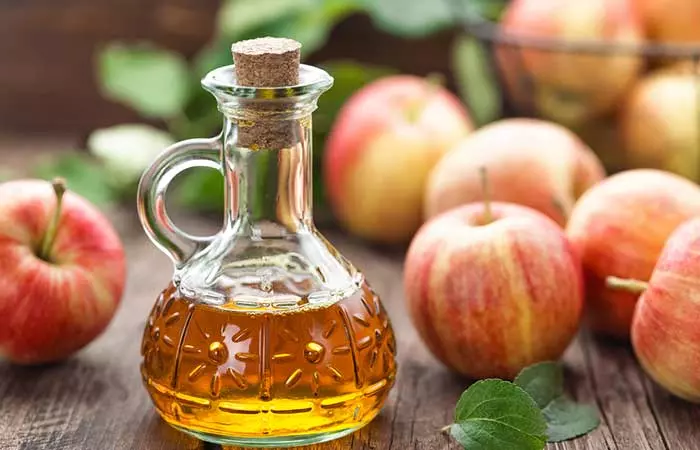
You Will Need
- A clean piece of cloth
- ACV
What You Have To Do
- Take a clean piece of cloth and soak it in ACV.
- Wrap this around the affected areas.
- Leave this on for about 20 to 30 minutes.
How Often You Should Do This
Do this 2 to 3 times daily.
Why This Works
Apple cider vinegar (ACV) improves blood flow in the affected area, thus helping you get rid of spider veins. Research shows that acetic acid, the main ingredient in apple cider vinegar, helps widen blood vessels by activating a key enzyme in the cells lining the blood vessels (5). This might help improve blood flow.
Caution
Due to the acidic nature of ACV, it is recommended to do a patch test on your skin before following this remedy.
2. Witch Hazel
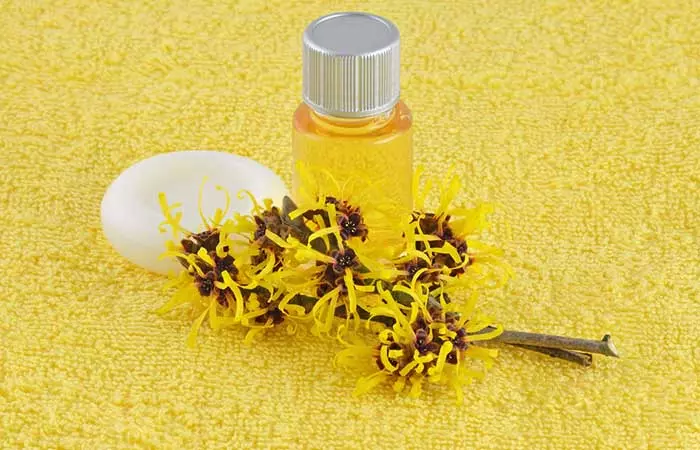
You Will Need
- Cotton pads
- Witch hazel
What You Have To Do
- Take a cotton pad and soak it in witch hazel.
- Dab this directly on the spider veins and leave it on for 20 to 30 minutes.
How Often You Should Do This
Repeat this 2 to 3 times daily.
Why This Works
Witch hazel is a natural astringent and is also known for its anti-inflammatory properties. The spider veins might shrink and become less visible on the topical application of this oil. Witch hazel contains tanninsi Naturally occurring water-soluble compounds found in plants that help increase blood clotting, and lower blood pressure. and volatile oils, both of which can reduce inflammation and heal the inflamed veins (6).
3. Massage Oils
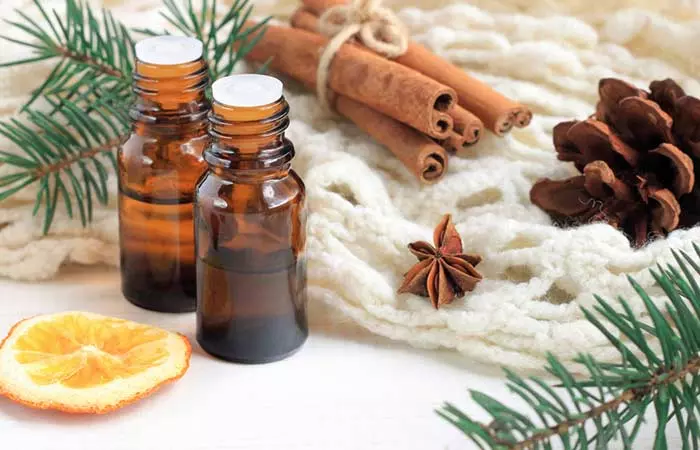
One of the basic and most efficient ways to treat spider veins is by massaging the affected area. Massaging the affected area improves blood flow, and provides optimum hydration (7). This may help diminish the appearance of spider veins.
a. Castor Oil
You Will Need
Cold compressed castor oil
What You Have To Do
- Apply cold compressed castor oil directly to the affected areas.
- Leave it on for 20 to 30 minutes.
How Often You Should Do This
Follow this regimen 2 to 3 times daily.
Why This Works
While it is not certain whether castor oil improves blood circulation, it has anti-inflammatory, stimulating, and analgesic properties (8). This can be a great help in treating spider veins and reducing their appearance.
Tip
Use cold compressed castor oil as this is its purest form.
b. Coconut Oil
You Will Need
Cold compressed coconut oil
What You Have To Do
- Take some coconut oil and warm it by rubbing it between your hands.
- Massage it onto the affected areas.
- Continue massaging for 10 to 15 minutes.
How Often You Should Do This
Repeat this daily for best results.
Why This Works
Coconut oil is one of the best natural sources of antioxidants (9). It may help improve blood flow, thus treating spider veins.
Caution
Cold compressed coconut oil is recommended due to its refined composition.
4. Epsom Salt
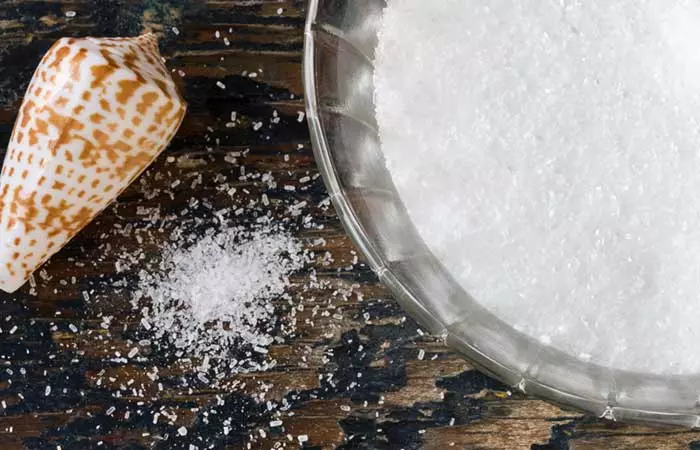
You Will Need
- 2-3 cups of Epsom salt
- Water
What You Have To Do
- Add two to three cups of Epsom salt to your bathwater.
- Soak in it and relax for 30 to 40 minutes.
- Alternatively, you can pour a cup of Epsom salt in a bucket filled with water and use it to soak your legs.
How Often You Should Do This
Do this 3 to 4 times a week.
Why This Works
Epsom salt, also known as magnesium sulfate, is well known for its detoxifying and anti-inflammatory properties. Research indicates a correlation between lower serum magnesium levels and increased risk of venous insufficiency (a condition impacting the functioning of the veins, hindering the movement of blood from the legs to the heart) (10). Adequate magnesium levels may help with spider veins by ensuring smoother blood flow in the veins. However, Epsom salt is to be only used externally and should not be ingested.
5. Hot Or Cold Compress
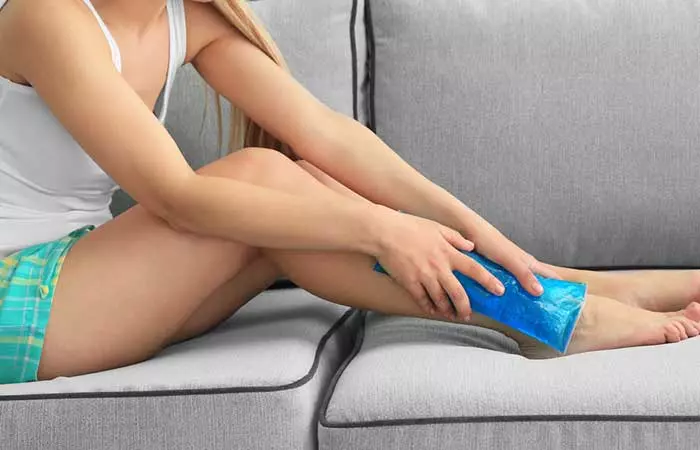
You Will Need
Hot/Cold compress
What You Have To Do
- In case there is a blood clot in any of the spider veins, elevate your leg and use a hot compress on the affected area. This method is one way to understand how to dissolve blood clots in the legs.
- A cold compress is usually used when there is an injury on the area affected by spider veins.
How Often You Should Do This
Use according to your symptoms.
Why This Works
A hot compress removes clots and promotes blood flow while a cold compress reduces inflammation and minimizes bruising around the spider veins (11) (12).
Caution
Elevate your leg while applying a compress. This is to avoid pooling of blood in the affected area.
6. Grape Seed Extract
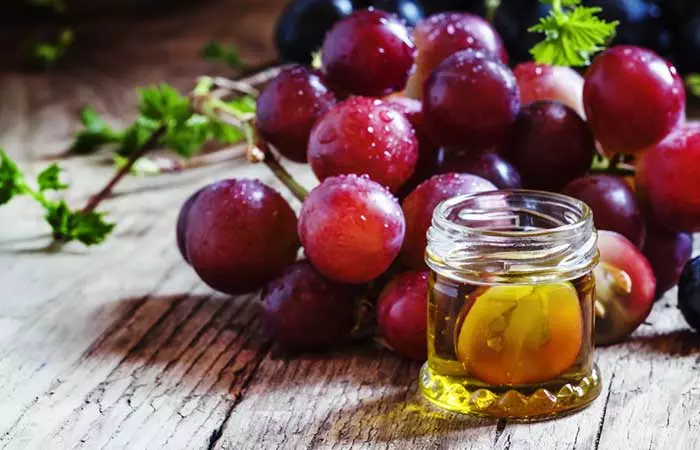
You Will Need
Grape seed extract supplement (liquid or capsule form)
What You Have To Do
Take 720 mg of grape seed extract.
How Often You Should Do This
Consume this supplement daily.
Why This Works
The seeds of black or red grapes are rich in bioflavonoidsi Natural compounds that are produced by plants and are an excellent source of vitamin C. They exhibit antioxidant properties. called oligomeric proanthocyanidin complexes (OPCs) (13). These complexes are known to treat spider veins by promoting the circulation of blood while reducing inflammation.
7. Garlic

You Will Need
- 6 garlic cloves
- Rubbing alcohol
What You Have To Do
- Take six cloves of garlic and mince them to form a fine paste.
- Mix this paste with a few drops of rubbing alcohol and massage onto the affected area.
- Leave it on for 15 to 20 minutes.
How Often You Should Do This
Repeat this procedure daily for best results.
Why This Works
Garlic is best known for its antioxidant and anti-inflammatory properties. Its ability to enhance blood circulation helps in the treatment of spider veins (14).
For best results, you can also include garlic in your diet.
8. Green Tomatoes
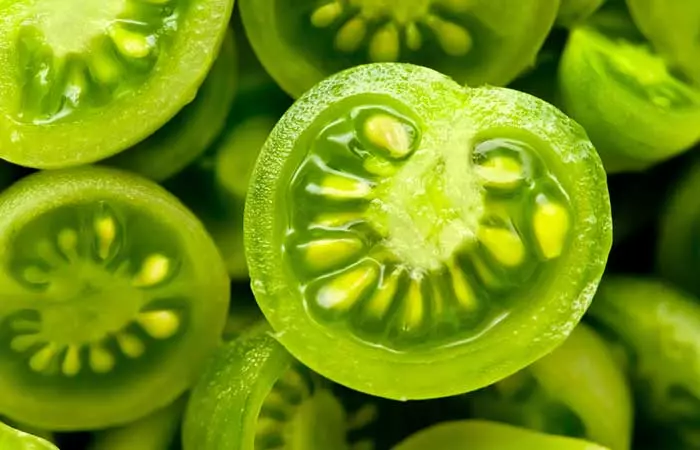
You Will Need
- Green tomatoes
- Bandage
What You Have To Do
- Wash the tomatoes.
- Slice them into rings and place them on the affected areas.
- Wrap the entire area with a bandage.
- Leave it on until you feel a tingling sensation in the covered area.
- Remove the bandage and wash your skin thoroughly with water.
How Often You Should Do This
Do this 4 times a day.
Why This Works
Green tomatoes enhance blood circulation in the affected areas. The seeds of these tomatoes contain an acidic substance that helps in this regard. This substance acts as a natural anticoagulanti Substances that prevent blood clotting in the vessels and the heart. They help reduce the risk of heart attacks. , helps improve blood flow, and reduces inflammation (15).
Caution
Do not wrap the bandage too tightly around the spider veins.
9. Ginger
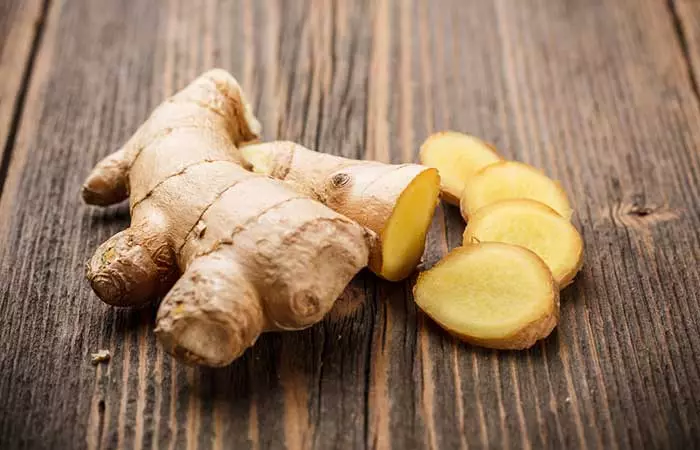
You Will Need
- 1 inch ginger
- Water
What You Have To Do
- Cut the ginger into small pieces and add to a glass of boiling water.
- Let it simmer for 10 minutes.
- Strain the water and add honey to taste.
- Consume this water immediately.
How Often You Should Do This
Do this 2 to 3 times a day.
Why This Works
The anti-inflammatory and antioxidant properties of ginger are due to the presence of a compound called gingerol (16). These properties make ginger one of the best natural ways to combat spider veins.
You can also include ginger in your daily diet.
10. Ginkgo Biloba
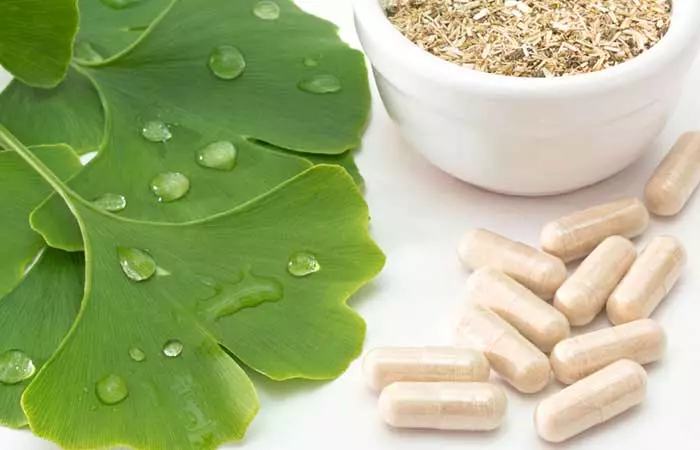
You Will Need
40 mg ginkgo extract supplements
What You Have To Do
Consume 40 mg of ginkgo extract.
How Often You Should Do This
Consume this 3 times a day.
Why This Works
Ginkgo biloba contains active ingredients that are known to strengthen the tissues of the vein walls (17). It is also used to improve blood circulation, and can thus be used for treating spider veins as well.
11. Horse Chestnut
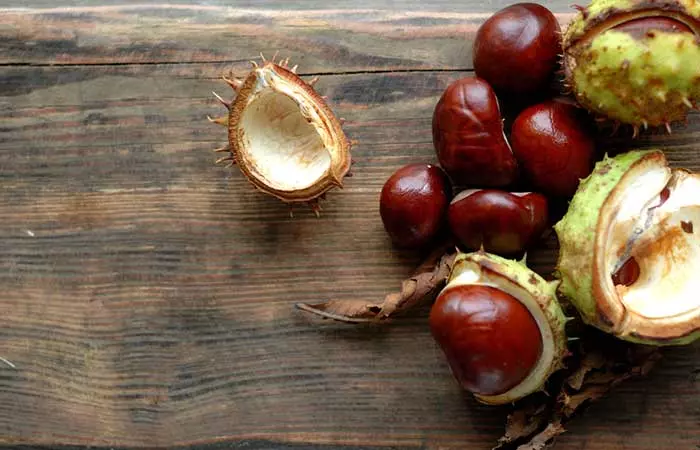
You Will Need
Aescin supplement (50mg)
What You Have To Do
Consume 50 mg of aescin supplement on a daily basis.
How Often You Should Do This
Have this twice daily.
Why This Works
Being a flowering plant, horse chestnut contains a component called aescin. This extract strengthens the tissues of the vein walls and reduces inflammation caused by spider veins. It is also involved in the active regeneration of weak or damaged veins (18).
Tip
You can top this with one of the topical remedies.
12. Japanese Pagoda Tree Extract

You Will Need
Japanese pagoda extract and its supplement
What You Have To Do
You can either take Japanese pagoda tree extract as a supplement or apply it topically.
How Often You Should Do This
Do this daily.
Why This Works
Japanese pagoda extract increases the circulation of blood and strengthens the veins (19).
13. Lemon Juice And Baking Soda
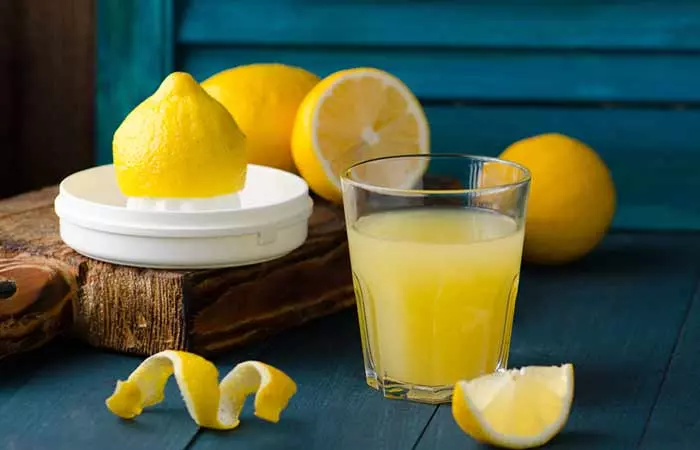
You Will Need
- 1-2 tablespoons of freshly squeezed lemon
- 1/8 teaspoon of baking soda
- 1 glass of water
What You Have To Do
- Add one to two tablespoons of lemon juice to a glass of water.
- Add baking soda to this mixture.
- At this point, the solution becomes fizzy.
- Once the fizz reduces, you can go ahead and consume this solution.
How Often You Should Do This
Drink 2 to 3 glasses of this mixture daily.
Why This Works
Lemon juice is rich in vitamin C and is often used as a blood purifier. Baking soda is alkaline and is often used for its neutralizing properties (20). A combination of these compounds was found to relieve and treat spider veins.
Tip
Alternatively, you can apply lemon topically on the affected areas.
14. Oak Bark Tea
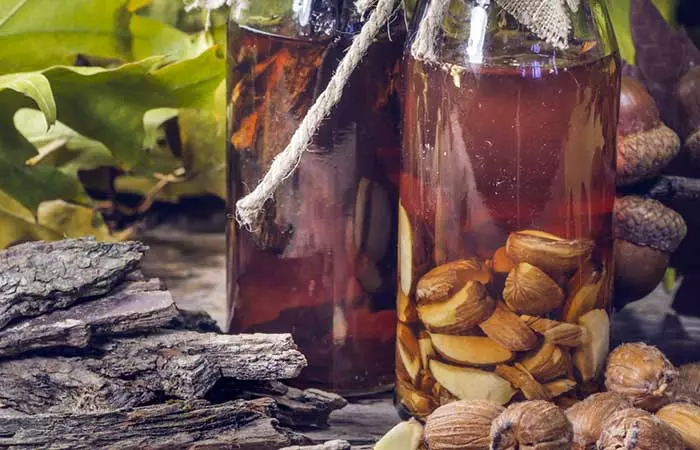
You Will Need
- Oak bark tea extract
- Water
What You Have To Do
- Boil some oak bark tea extract with a cup of water.
- Add honey for flavor. Consume immediately.
How Often You Should Do This
Consume one cup of oak bark tea daily.
Why This Works
Being rich in many vitamins and minerals, white oak bark tea is quite popular for its healing properties (21). One of its greatest advantages is its ability to stabilize and strengthen veins. Thus, oak bark tea is used in the treatment of spider veins as well.
Tip
You can also apply this tea topically with a cloth compress. Once absorbed by the skin, it can relieve symptoms associated with spider veins.
15. Alternative Teas
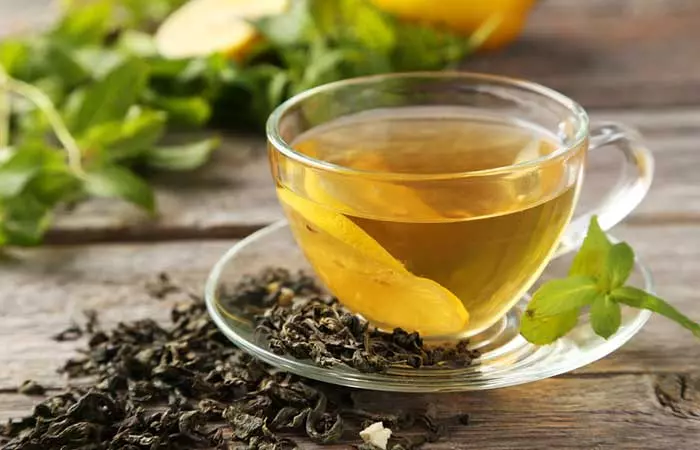
a. Green Tea
You Will Need
- Green tea extract
- Water
What You Have To Do
- Boil some green tea extract with a cup of water.
- Add honey for flavor. Consume immediately.
How Often You Should Do This
Drink 2 cups of green tea daily.
Why This Works
Green tea is one of the best natural antioxidants. This property makes it suitable to treat a variety of ailments, including spider veins. It can reduce inflammation and strengthen the vein walls (22).
 Quick Tip
Quick Tipb. Chamomile Tea
You Will Need
- Chamomile tea extract
- Water
What You Have To Do
- Boil some chamomile tea extract with a cup of water.
- Add honey for flavor. Consume immediately.
How Often You Should Do This
Drink chamomile tea daily for best results.
Why This Works
Chamomile tea has antiseptic and anti-inflammatory properties that can help treat spider veins and their symptoms (23).
Tip
Chamomile tea can also be soaked in a cloth and wrapped around the spider veins for faster recovery.
 Quick Tip
Quick Tipc. Witch Hazel Tea
You Will Need
- Witch hazel tea extract
- Water
What You Have To Do
- Boil some witch hazel tea extract with a cup of water.
- Add honey for flavor. Consume immediately.
How Often You Should Do This
Drink this tea daily for best results.
Why This Works
The anti-inflammatory properties of witch hazel help in treating the inflamed spider veins (6).
Tip
Alternatively, witch hazel oil can also be applied topically to relieve symptoms associated with spider veins.
16. Tea Tree Oil
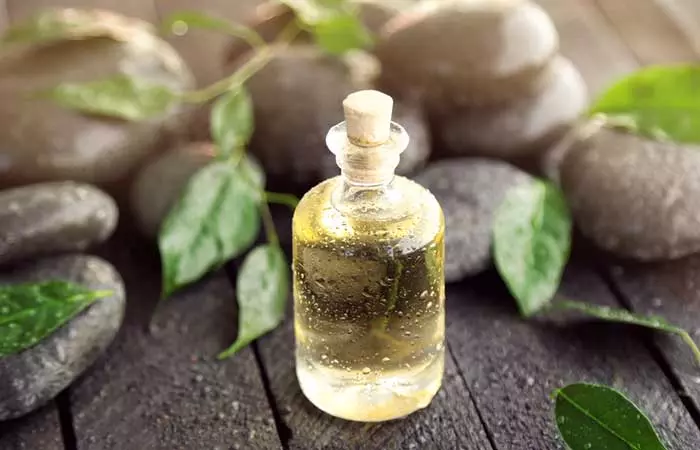
You Will Need
Tea tree oil
What You Have To Do
- Take some tea tree oil in your palms and massage it onto the areas affected by spider veins.
- You can also add aloe vera or any other carrier oil for the massage.
How Often You Should Do This
Do this daily.
Why This Works
Tea tree oil has antibacterial and antiseptic properties (24). Thus, it can be used for treating spider veins and relieving the inflammation and discomfort associated with them.
Tip
Tea tree oil, when combined with aloe vera, can also moderately treat spider veins.
Clare, a beauty blogger, recounted her experience of accidentally discovering the effectiveness of tea tree oil in reducing the appearance of spider veins. She said, “I noticed after using it a week that my spider veins started to diminish.They haven’t gone all together by all means, but they certainly are much less noticeable than before (i).”
17. Saline Injections
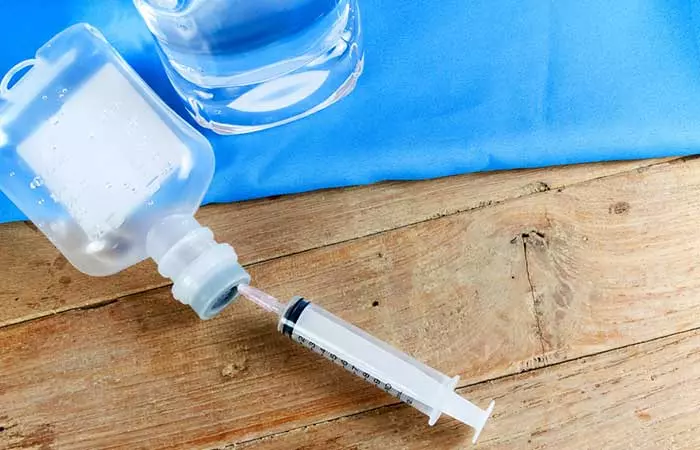
You Will Need
Saline injections (Sclerotherapy)
What You Have To Do
- This process mainly involves injecting a saline solution into the affected veins.
- At times, this step is followed by compressing the injected area with bandages or stockings.
How Often You Should Do This
As suggested by your physician.
Why This Works
Saline injections, also referred to as sclerotherapy, have been used for treating spider veins for centuries. Injecting a saline solution into the affected veins results in the damage of the inner vein walls. This leads to inflammation and clotting of blood in the veins, and the spider veins lose their color and diminish in appearance (25).
Caution
Take these injections only under medical supervision.
18. Turmeric
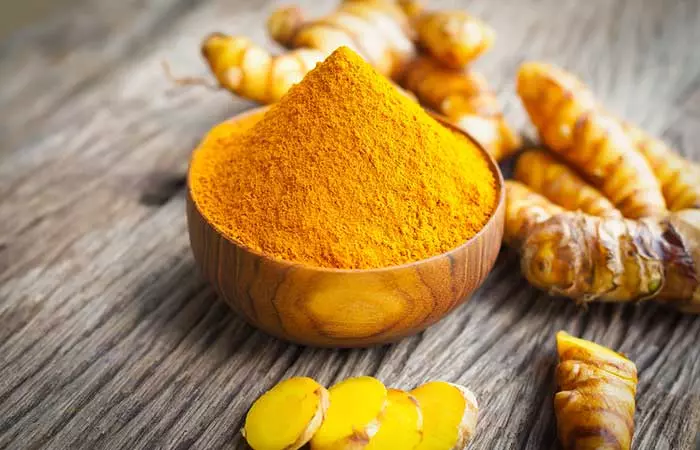
You Will Need
- 1 teaspoon of turmeric powder
- 1 glass of milk
What You Have To Do
Add a teaspoon of turmeric to a glass of hot milk and consume daily.
How Often You Should Do This
Drink this daily for best results.
Why This Works
Turmeric contains a phytochemicali Compounds found in fruits, vegetables, and nuts. They help boost the immune system, reduce oxidative stress, and accelerate healing. called curcumin, which is rich in antioxidants and imparts anti-inflammatory and antiseptic properties to it (26). These properties help treat spider veins and relieve the symptoms.
Tip
You can also mix turmeric with water and apply it directly to the affected areas.
19. Calendula Oil
You Will Need
Calendula-infused oil
What You Have To Do
- Clean the affected area gently with mild soap and water, then pat dry.
- Take a few drops of calendula oil and apply it directly onto the spider veins.
- Gently massage the area using upward, circular motions for 2-3 minutes to allow the oil to absorb into the skin.
How Often You Should Do This
Apply calendula oil twice daily, preferably in the morning and evening.
Why This Works
Calendula oil is rich in flavonoids and carotenoids, which are known for their anti-inflammatory and antioxidant properties (27). While research is insufficient regarding its effects on treating spider veins, anecdotal evidence suggests that calendula oil may help reduce inflammation, boost blood flow, and strengthen the veins, potentially alleviating the appearance of spider veins.
These are the simple home remedies to improve spider veins naturally. However, sometimes you might have to seek professional advice. Keep reading to learn more about it.
When To Seek Professional Treatment?
If spider veins cause pain, swelling, or discomfort, or if they become more noticeable over time, it is wise to seek professional advice. A doctor can assess if there is an underlying issue and suggest suitable treatments. While complications from untreated spider veins are rare and usually not serious, severe cases linked to it can lead to sores, skin ulcers, or inflammation (1).
That said, it is always best to prevent the condition rather than treat it. Read on to learn about some helpful prevention tips as well.
How To Prevent Spider Veins
Here are a few ways in which you can prevent spider veins from occurring:
- Always wear sunscreen to limit the spider veins on your face.
- Exercise daily to improve the blood circulation in your legs.
- Keep a check on your weight.
- Eat healthily. Foods like fruits, onions, and garlic are rich in flavanoids that reduce blood pressure and relax the blood vessels.
- Avoid sitting or standing for long durations.
- Avoid wearing tight clothing.
- Wear support stockings.
- Avoid wearing high heels for a long duration.
- Follow a low-salt, high-fiber diet and consume foods like oats, wheat, flaxseed, whole grains, nuts, and seeds.
- Keep the leg elevated to reduce pressure in the leg veins. Gravity will enable smooth blood flow to the heart.
- Gently massage the affected area to help blood circulation.
If you follow the above tips and remedies discussed in this post, you will see your spider veins vanish in no time.
Infographic: Easy Home Remedies To Treat Spider Veins
Spider veins can be irritating and painful, causing involuntary throbbing in limbs and rashes around the area. However, several home remedies can help you treat the condition naturally at home.
Check the infographic below to know the most effective and accessible herbal remedies available out there.
Some thing wrong with infographic shortcode. please verify shortcode syntax
Spider veins are small and damaged veins that develop under the skin due to factors such as aging, obesity, genetics, or pregnancy. They are accompanied by symptoms such as itching, pain, rashes, and ulcers on the skin. Doctors opt for surgical methods such as sclerotherapy or laser therapy to treat spider veins. If you want to go for natural alternatives, you can use ingredients such as apple cider vinegar, turmeric, ginger, or tea tree oil may help reduce the symptoms of spider veins. Along with that, eating healthy, exercising daily, or gently massaging the affected areas will promote blood circulation and may reduce spider veins.
Frequently Asked Questions
Can spider veins go away on their own?
No, spider veins do not heal without treatment.
What can happen if spider veins are not treated?
If left untreated, spider veins may start to swell and pain. The symptoms can also become worse if not attended to immediately (28).
What happens if you pop a spider vein?
Under medical supervision, a spider vein may be popped by a needle. However, if a spider veins pops due to an injury, apply an ice compress to the affected area immediately to avoid further bleeding.
Can spider veins cause swollen ankles?
If spider veins are present inside the ankle, there is a possibility of a more serious underlying condition. In this case, swelling and inflammation of the ankles are quite common and need to be treated immediately (29).
Can you tattoo over spider veins?
Tattooing over spider veins is usually done to hide their appearance. However, this increases the risk of vein damage and infection in that area (30).
Are compression stockings good for spider veins?
Yes, compression stockings are good for spider veins and help relieve the symptoms associated with it. They are especially helpful for those who need to sit for a long time as they promote blood flow (31).
Are spider veins permanent?
No. Also, while certain spider veins caused by pregnancy or medications may disappear on their own, others may warrant medical intervention. Consult your doctor and understand what the best treatment option for you is.
Can I apply itching creams on spider veins?
Yes, your doctor will prescribe you creams containing antihistamines or corticosteroids to reduce inflammation and itching associated with spider veins.
Are the treatments for varicose veins and spider veins the same?
While varicose veins are deeper and a more serious condition than spider veins, treatments like sclerotherapy and laser therapy are used to treat both conditions. Your doctor will assess the severity of your condition and select the treatment suitable for you.
How can I permanently cure spider veins?
Natural remedies can provide relief and help manage symptoms. However, if you want to permanently get rid of spider veins, you may need to opt for medical procedures. Treatments like sclerotherapy can improve the appearance of spider veins drastically in just a few sessions. Consult your doctor to understand the right treatment option for you.
Illustration: Home Remedies To Improve Spider Veins Naturally
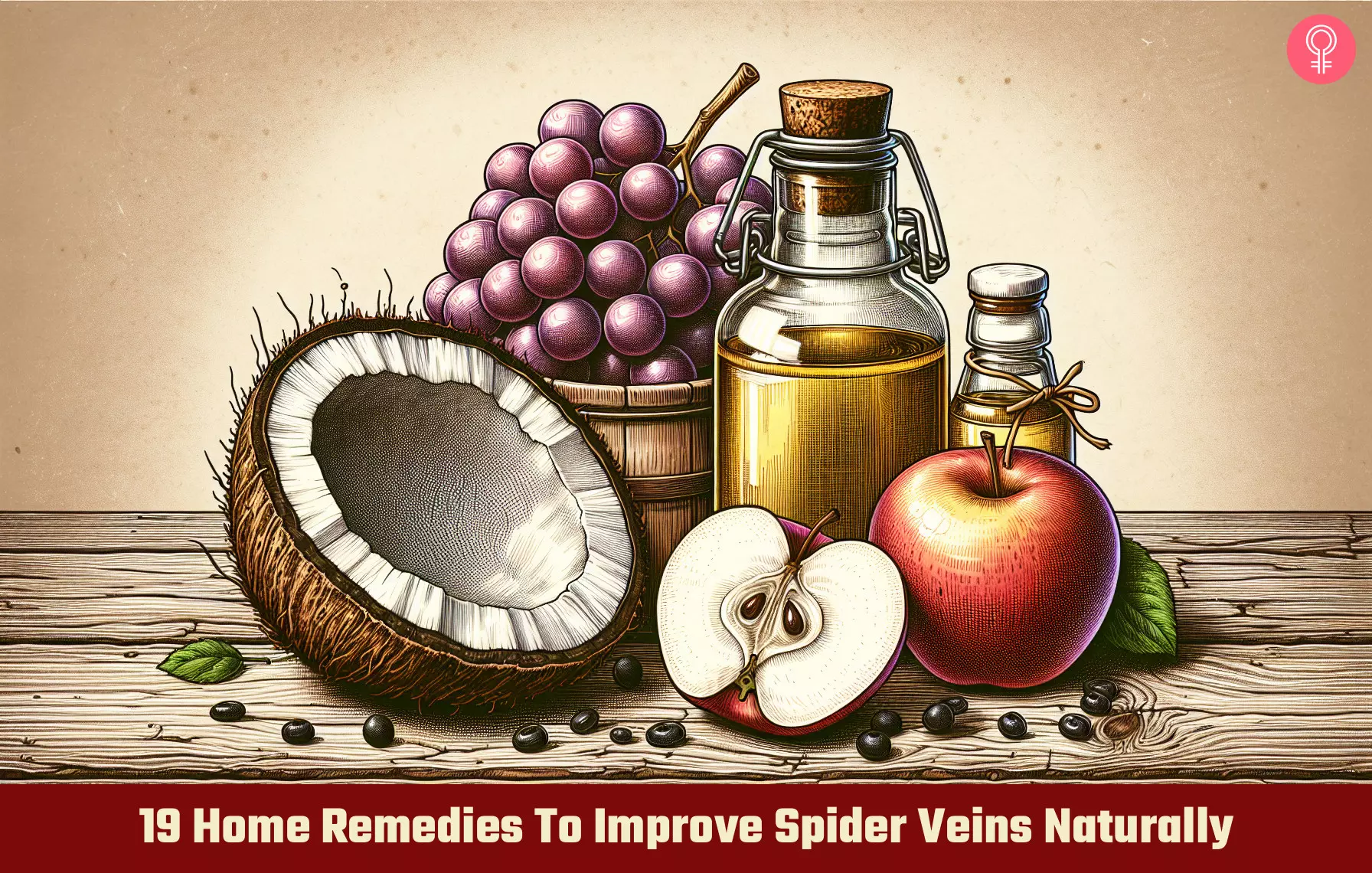
Image: Dall·E/StyleCraze Design Team
Learn how to reduce the appearance of spider veins with simple home remedies! Discover simple treatments to help reduce the symptoms of spider veins and more in this video.
Personal Experience: Source
StyleCraze's articles are interwoven with authentic personal narratives that provide depth and resonance to our content. Below are the sources of the personal accounts referenced in this article.
i. How tea tree oil diminished my spider veinshttps://claresbeauty.wordpress.com/2015/01/24/how-tea-tree-oil-diminished-my-spider-veins/
References
Articles on StyleCraze are backed by verified information from peer-reviewed and academic research papers, reputed organizations, research institutions, and medical associations to ensure accuracy and relevance. Read our editorial policy to learn more.
Articles on StyleCraze are backed by verified information from peer-reviewed and academic research papers, reputed organizations, research institutions, and medical associations to ensure accuracy and relevance. Read our editorial policy to learn more.
- Spider Veins- StatPearls
https://www.ncbi.nlm.nih.gov/books/NBK563218/ - Spider Veins
https://pubmed.ncbi.nlm.nih.gov/33085365/ - Varicose veins: Overview
https://www.ncbi.nlm.nih.gov/books/NBK279247/ - A Novel Approach for the Treatment of Spider Veins
https://www.ncbi.nlm.nih.gov/pmc/articles/PMC4551823/ - Vinegar intake enhances flow-mediated vasodilatation via upregulation of endothelial nitric oxide synthase activity
https://pubmed.ncbi.nlm.nih.gov/20460711/ - Antioxidant and potential anti-inflammatory activity of extracts and formulations of white tea, rose, and witch hazel on primary human dermal fibroblast cells
https://www.ncbi.nlm.nih.gov/pmc/articles/PMC3214789/ - Skin massage
https://www.ncbi.nlm.nih.gov/books/NBK333138/ - Effect of ricinoleic acid in acute and subchronic experimental models of inflammation.
https://pmc.ncbi.nlm.nih.gov/articles/PMC1781768/ - Antioxidant capacity and phenolic acids of virgin coconut oil
https://pubmed.ncbi.nlm.nih.gov/19115123/ - The relationship between venous insufficiency and serum magnesium level
https://pubmed.ncbi.nlm.nih.gov/36924158/ - Early warm compress treatment can promote recanalization of vascular embolisms and reduce tissue necrosis after polymethyl methacrylate injection
https://pmc.ncbi.nlm.nih.gov/articles/PMC9892021/ - Mechanisms and efficacy of heat and cold therapies for musculoskeletal injury
https://pubmed.ncbi.nlm.nih.gov/25526231/ - Protective effect of grape seed proanthocyanidin extract against oxidative stress induced by cisplatin in rats
https://www.sciencedirect.com/science/article/abs/pii/S0278691509000738?via%3Dihub - Garlic: a review of potential therapeutic effects
https://www.ncbi.nlm.nih.gov/pmc/articles/PMC4103721/ - Anticoagulant activity of fruits of Solanum lycopersicum (tomato) in albino Wistar rats
https://www.iomcworld.com/proceedings/anticoagulant-activity-of-fruits-of-solanum-lycopersicum-tomato-in-albino-wistar-rats-30018.html - Anti-Oxidative and Anti-Inflammatory Effects of Ginger in Health and Physical Activity: Review of Current Evidence
https://www.ncbi.nlm.nih.gov/pmc/articles/PMC3665023/ - Ginkgo biloba, troxerutin and heptaminol chlorhydrate combined treatment for the management of venous insufficiency and hemorrhoidal crises
https://pubmed.ncbi.nlm.nih.gov/35916818/ - Horse chestnut seed extract for chronic venous insufficiency
https://www.ncbi.nlm.nih.gov/pmc/articles/PMC7144685/ - Styphnolobium japonicum (L.) Schott Fruits Increase Stress Resistance and Exert Antioxidant Properties in Caenorhabditis elegans and Mouse Models
https://pmc.ncbi.nlm.nih.gov/articles/PMC6680879/ - The Role of Sodium Bicarbonate in the Management of Some Toxic Ingestions
https://www.hindawi.com/journals/ijn/2017/7831358/ - Medicinal Uses, Phytochemistry, and Pharmacological Activities of Quercus Species
https://pmc.ncbi.nlm.nih.gov/articles/PMC7415107/ - Antioxidant effects of green tea
https://pmc.ncbi.nlm.nih.gov/articles/PMC3679539/ - Chamomile: A herbal medicine of the past with a bright future (Review)
https://www.spandidos-publications.com/mmr/3/6/895 - Melaleuca alternifolia (Tea Tree) oil: a review of antimicrobial and other medicinal properties
https://pubmed.ncbi.nlm.nih.gov/16418522/ - Injection Sclerotherapy
https://www.ncbi.nlm.nih.gov/pmc/articles/PMC3036277/ - Antioxidant and anti-inflammatory properties of curcumin
https://pubmed.ncbi.nlm.nih.gov/17569207/ - Wound Healing and Anti-Inflammatory Effect in Animal Models of Calendula officinalis L. Growing in Brazil
https://www.ncbi.nlm.nih.gov/pmc/articles/PMC3270572/ - Clinical examination of varicose veins–a validation study.
https://www.ncbi.nlm.nih.gov/pmc/articles/PMC2503433/ - Chronic Venous Insufficiency and Varicose Veins
https://www.nejm.org/doi/full/10.1056/NEJMcp0802444 - Customized aesthetic and reconstructive temporary tattoo and method for making same
https://patents.google.com/patent/US6207874 - A physiological study of elastic compression stockings in venous disorders of the leg
https://bjssjournals.onlinelibrary.wiley.com/doi/abs/10.1002/bjs.1800670814
Read full bio of Dr. Bhakti Kapse
Read full bio of Shaheen Naser
Read full bio of Ramona Sinha
Read full bio of Swathi E






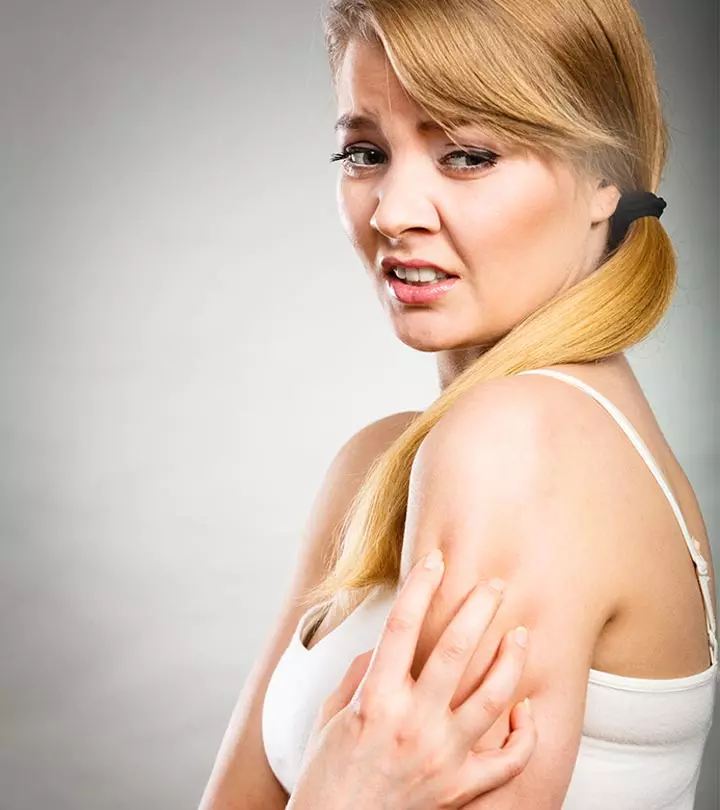
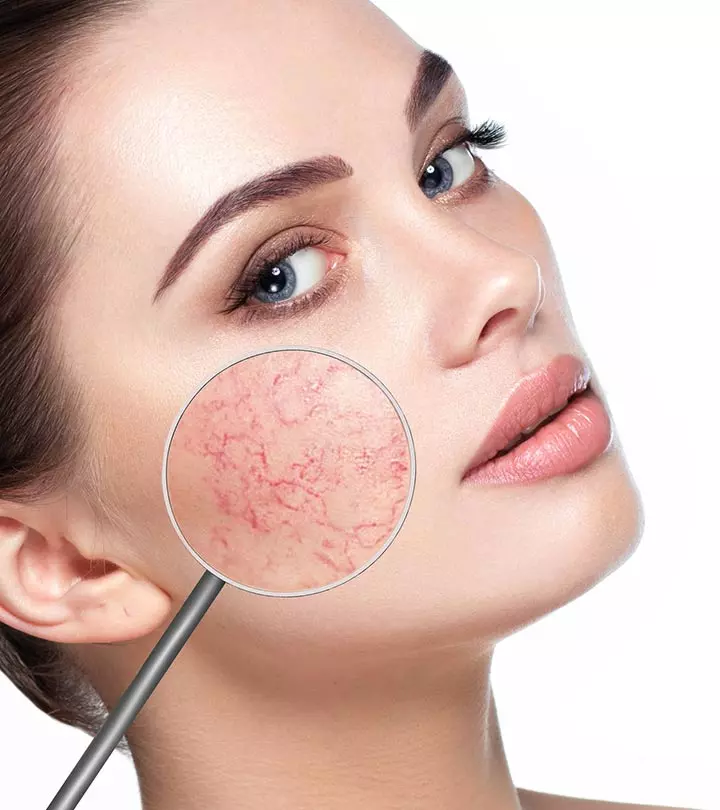
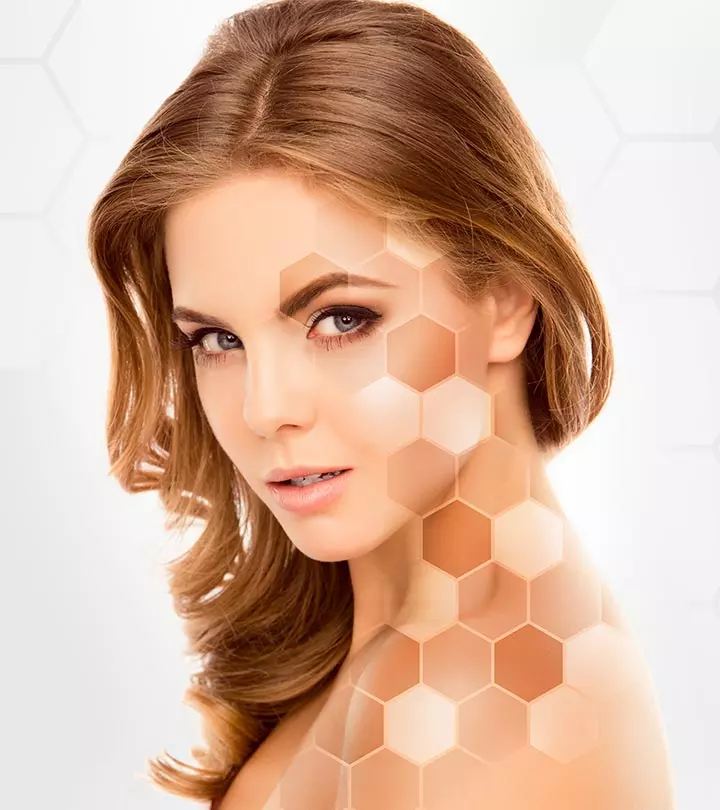

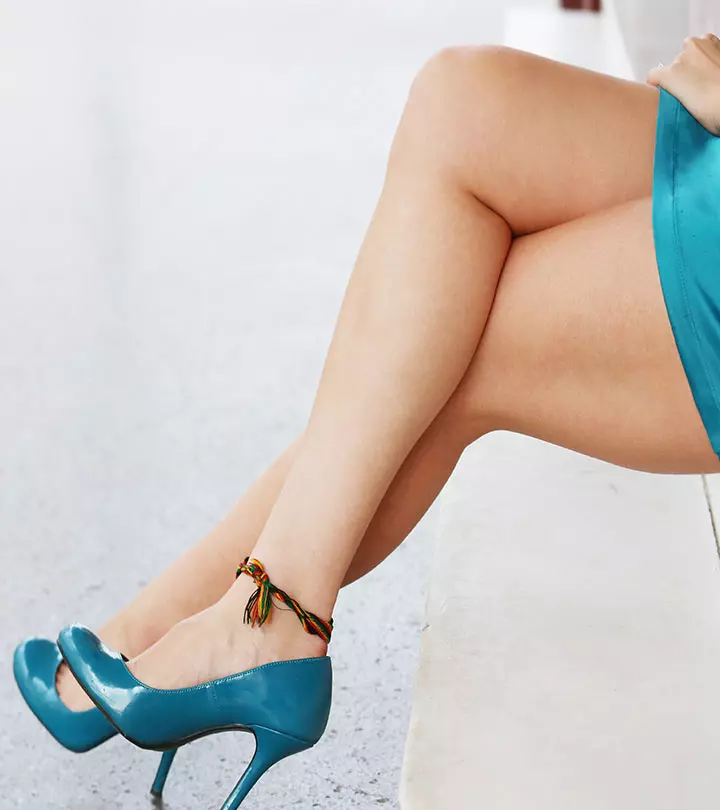
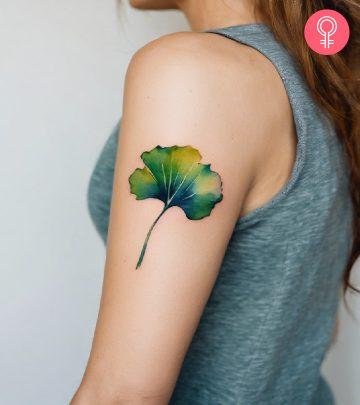
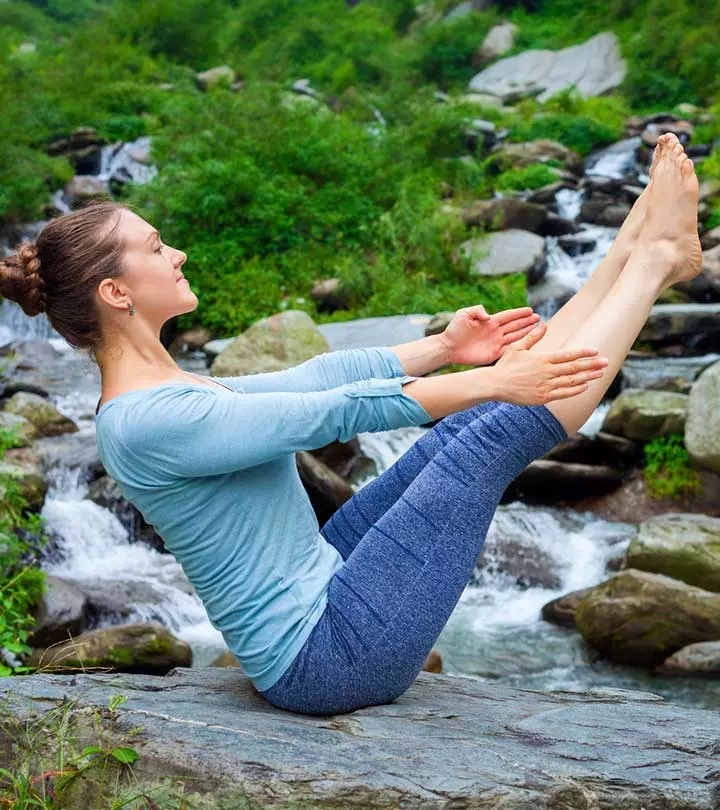
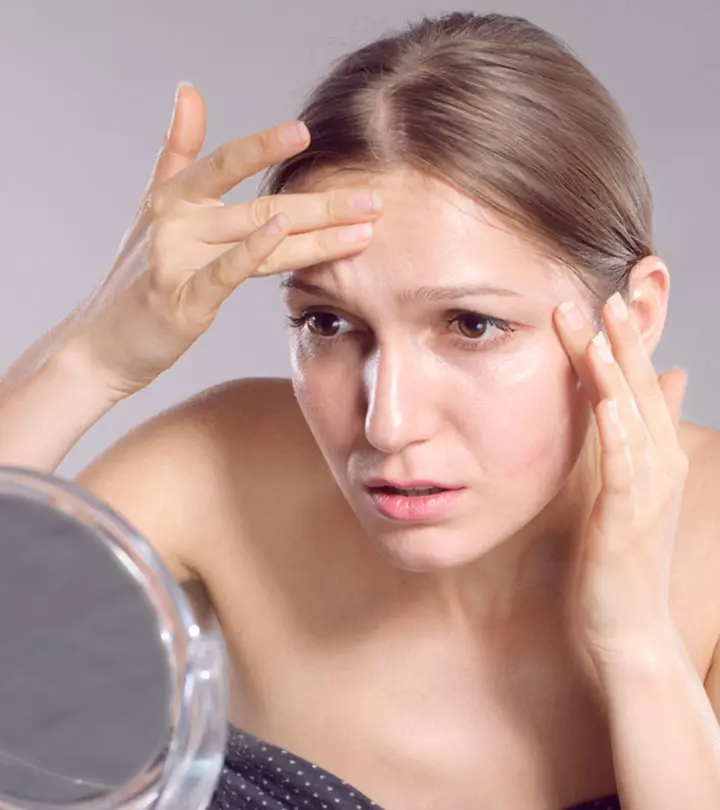


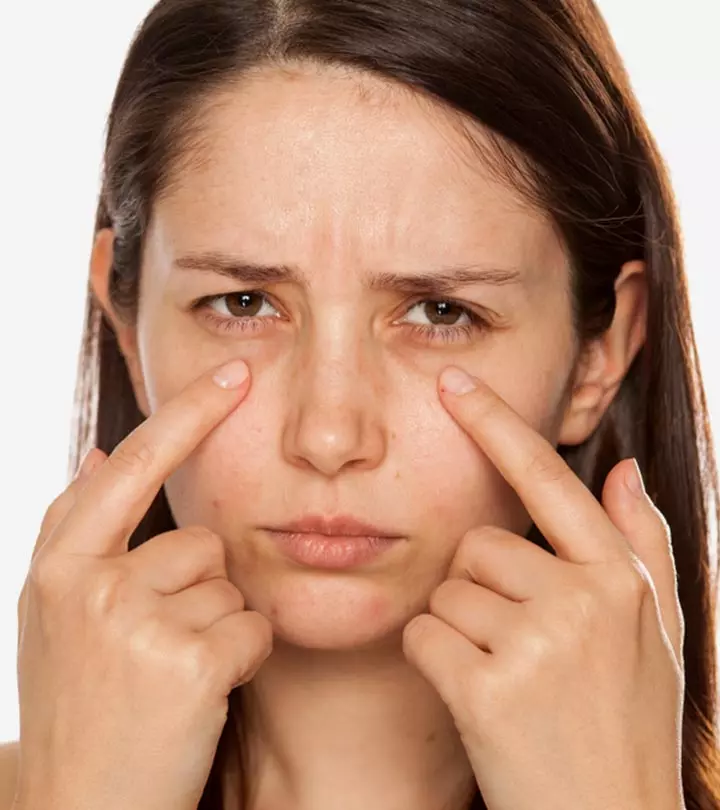
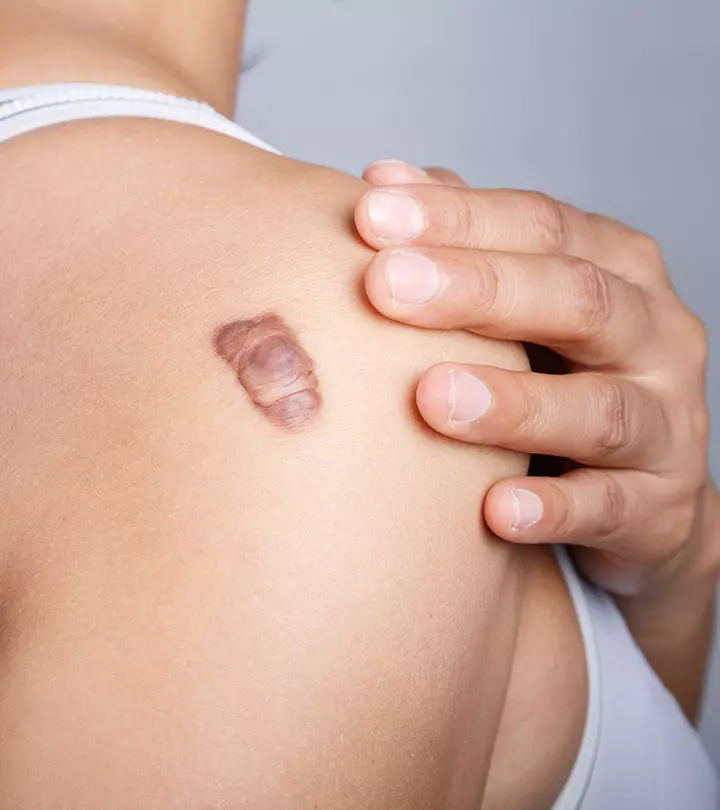
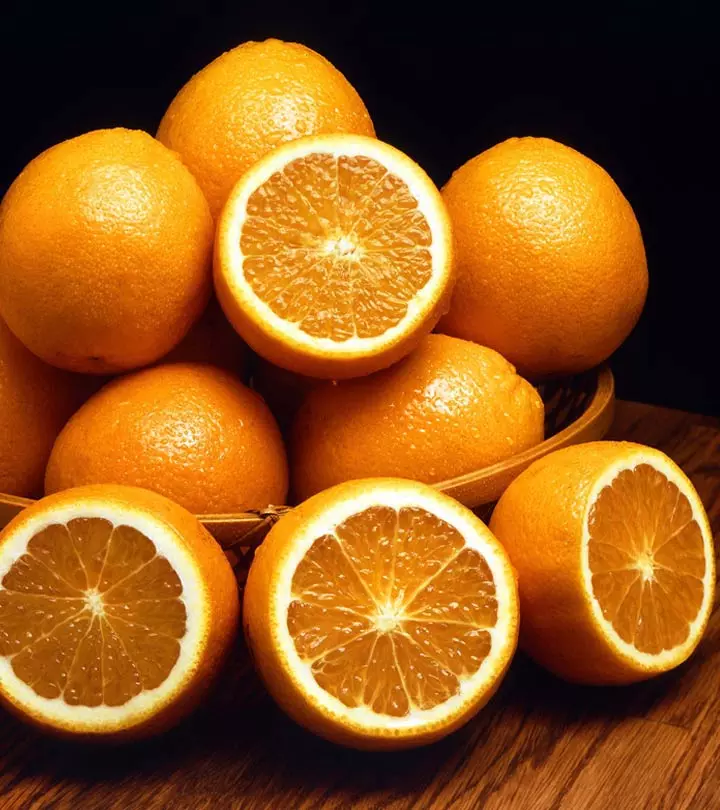
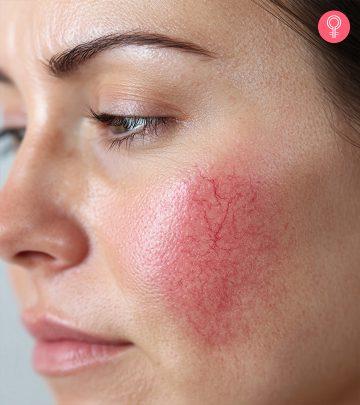
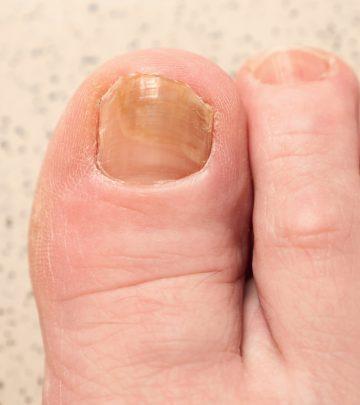

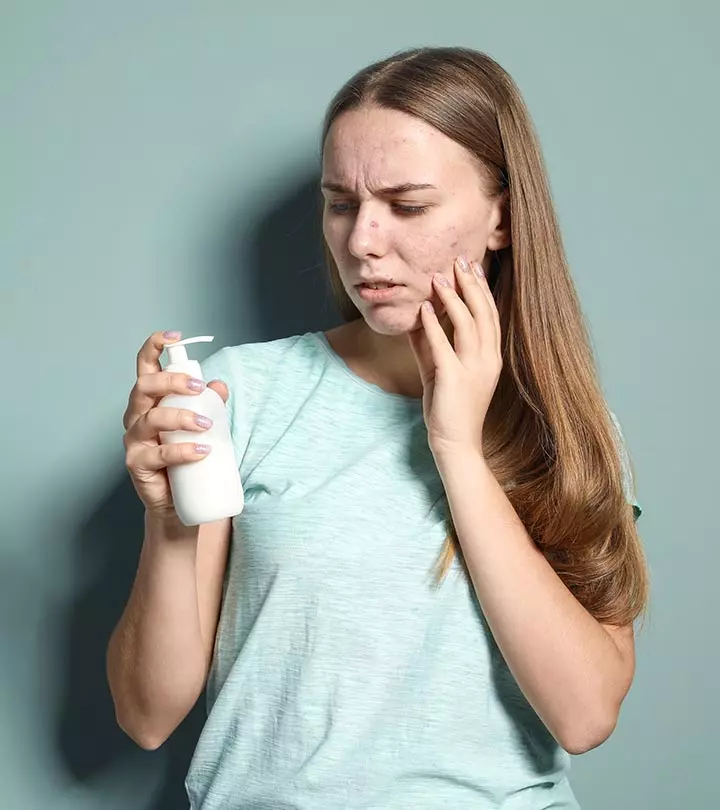
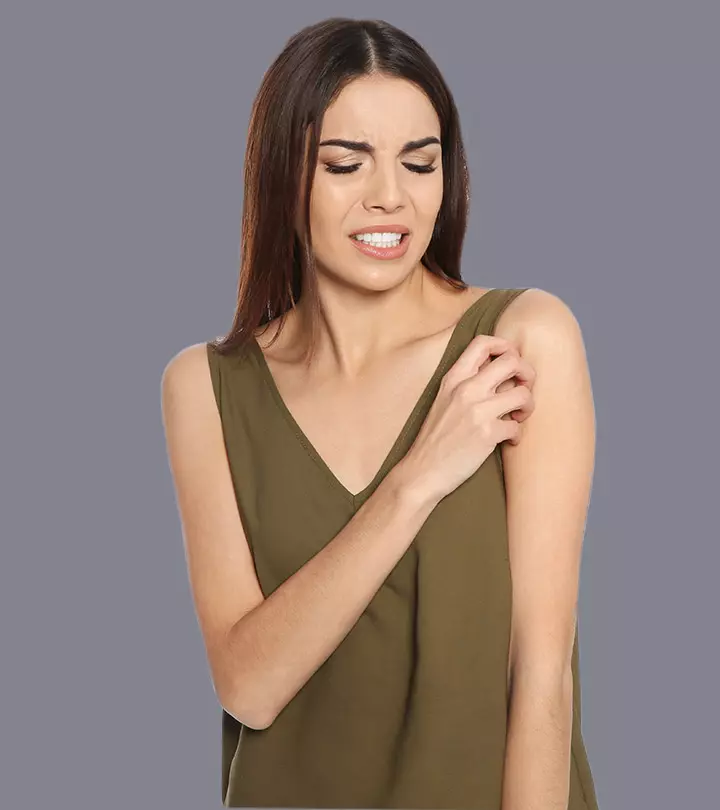


Community Experiences
Join the conversation and become a part of our empowering community! Share your stories, experiences, and insights to connect with other beauty, lifestyle, and health enthusiasts.